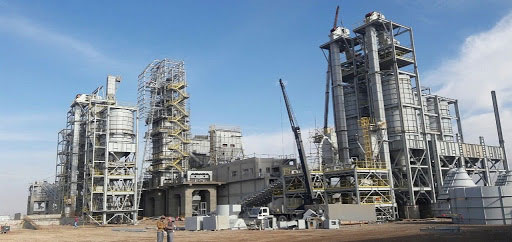
Alumina Production from Nepheline Syenite
The need for aluminum as a strategic metal has made the production of one million ton aluminum bullion an annual priority for Iran’s fourth national economic development plan.
The important issue of entrepreneurship and employment creation and contributing to the investment boom in the country, has made independent production of Aluminum by using new domestic resources and supplies to be studied and experimented. So that, Iranian specialists have used new mineral resources of Nepheline Syenite, which is abundant in Azarshahr mines, for the production of aluminum, instead of using alumina, which is scarce in Iran.
The approach of decision-makers of national industry and mines due to the lack of bauxite supply in the country should be thinking of suitable alternatives instead of this mineral.
Throughout, starting initial studies beginning in 1983 and following the discovery of high-tonnage Nepheline Syenite minerals in the Azarshahr region of northwestern Iran, complementary, feasibility and preliminary studies for the construction of a plant in Iran were carried out with the assistance of the Russian VAMI Institute for the Operation of Nepheline Syenite in Razgah Region 1992.
Since 1993, in addition to studies on the construction of the main Alumina production plant from Nepheline Syenite, the construction of a semi-industrial test unit in Azarshahr region in East Azarbaijan province was approved in order to carry out technological tests and examination of the Nepheline Syenite and mineral samples, beside, Alumina production process optimization was also performed.
The Executive Operations Project contract was signed with the Russian National Magnesium Aluminum Institute (VAMI) in 2001, to build a research and semi-industrial unit in Azarshahr.
Following the execution of this project and the virtues of many problems in acquiring and transferring technical knowledge from foreign contractors in the early years, the implementation of this project required the diligent efforts of Iranian engineers and in this regard Sadrab Sanat in collaboration with design and execution of industrial process in water company for the Nepheline pilot plant completed the project.
At the top, Sadrab Sanat is proud to share even a small part in fully acquiring the practical and technical knowledge to produce high quality alumina in the aluminum industry.
Nowadays, the nominal capacity of the main modeled unit at the pilot plant can reach a monthly production of 22.5 tons of alumina and other downstream by-products in the main plant.
Boehmite as the main downstream by-product of the main plant, is an aluminum oxide hydroxide mineral component and known as one of the basic requirements for the production of refined catalysts for refinement of gasoline and other oil derivatives used in national refineries.
In implementing this project, Sadrab Sanat has focused on the (SDG6) and (SDG12) goals of the United Nations’ 17 Sustainable Development Goals. So that, in addition to providing clean water according to the theme of (SDG6), and by aiming to conserve groundwater resources with the model of sustainable consumption and sustainable production, the issue of (SDG12) has also been addressed.
